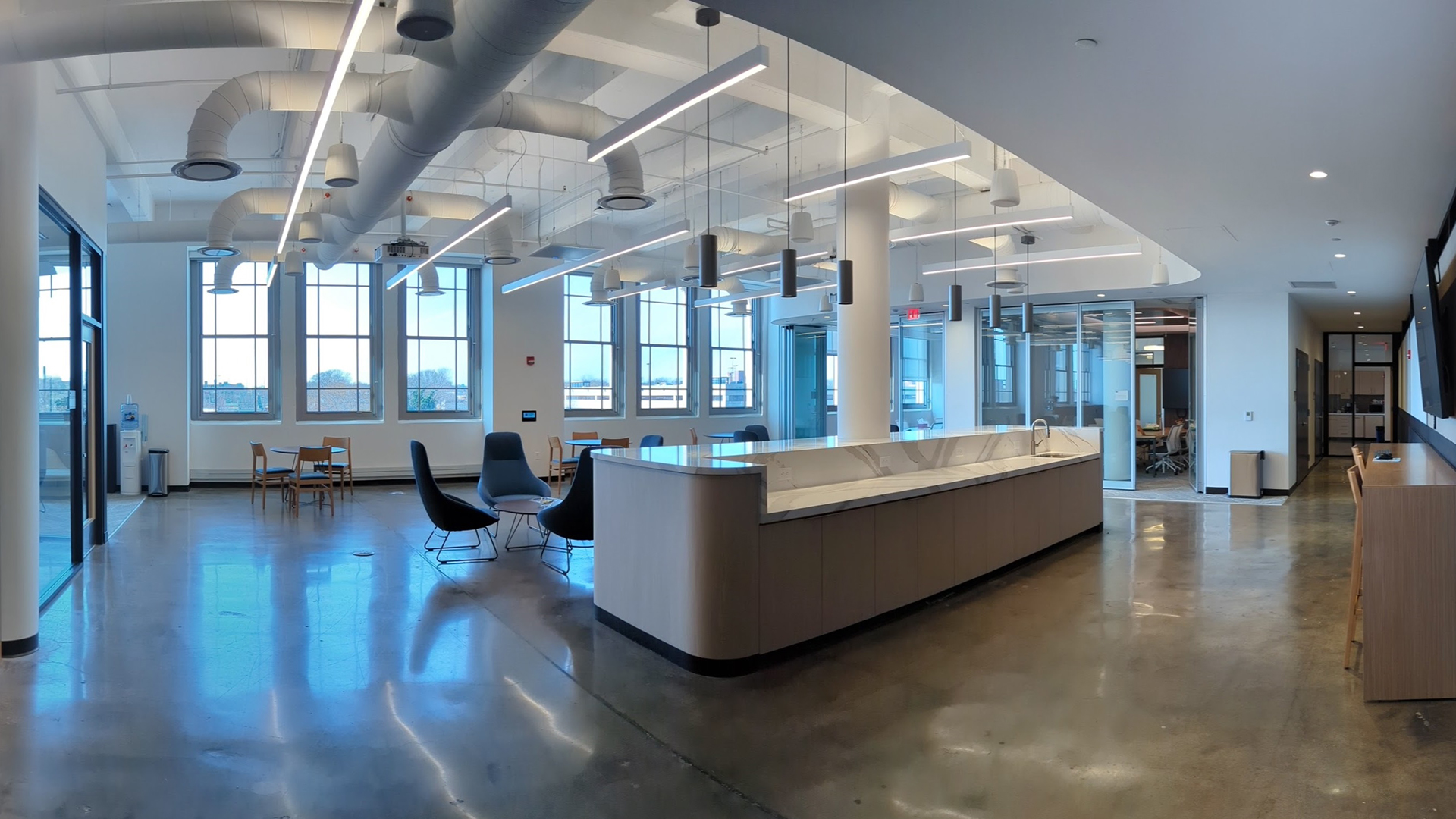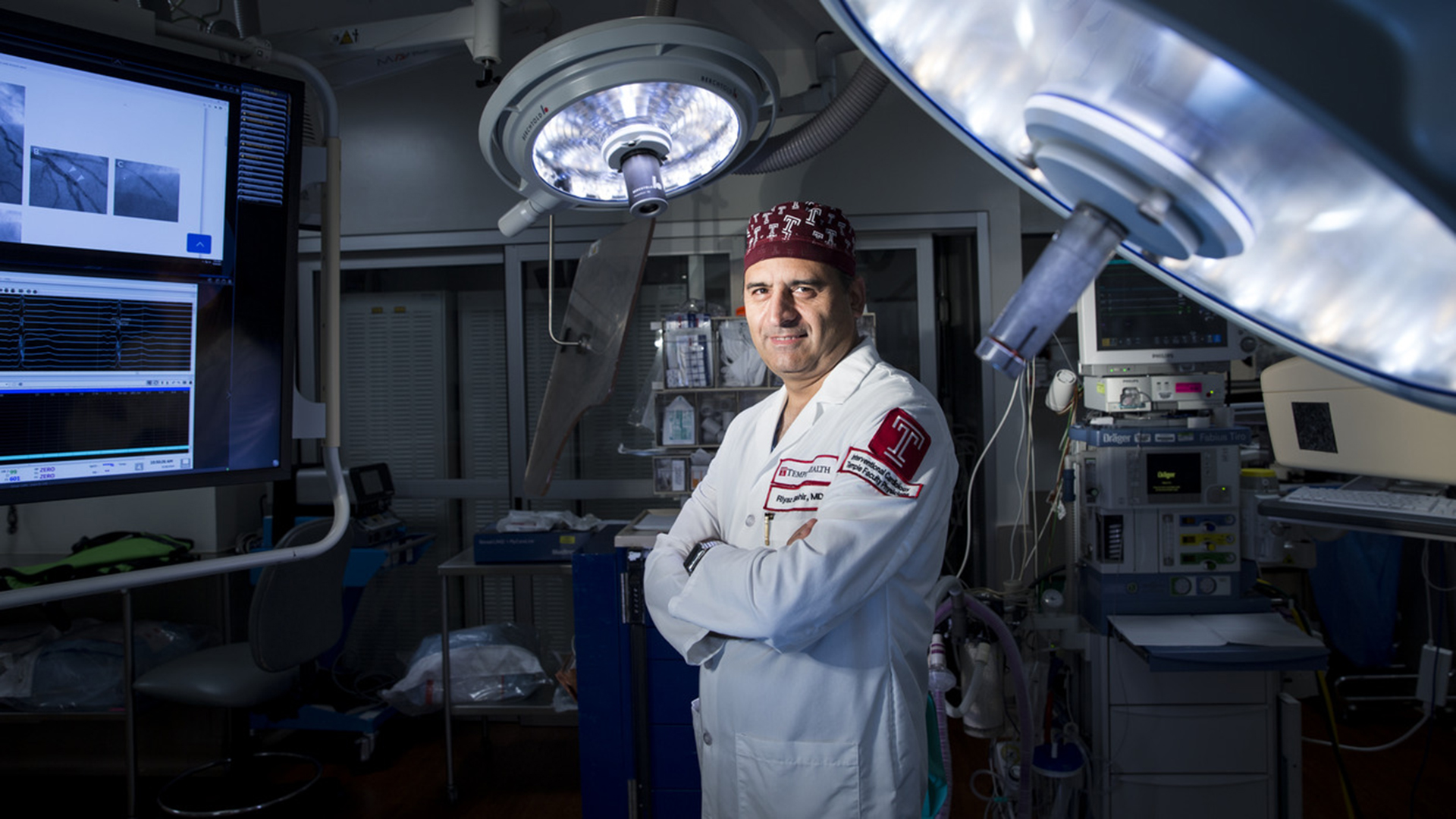Temple University, together with its ecosystem of partners, is moving research results along the path to commercialisation, impacting diverse communities.
The rise of Temple University’s research enterprise has generated a significant increase in discoveries for diverse communities. These range from potentially curative therapies for HIV and other viruses, genetically targeted treatments for cardiovascular disease, digital health solutions for autism and chronic obstructive pulmonary disease, and a virtual reality system to combat the impact falls have on the elderly population.
Advancing nascent technology out of research institutions presents an exciting opportunity for the world, but it is a journey. One that requires a community of champions that need to align to realise the potential impact of each discovery.
Community-focused innovation development Innovation needs a community to thrive. This includes scientific and professional experts to help navigate the complex process of bringing an idea to market, investors and other funders that enable new businesses to carry the university’s innovation forward, and entrepreneurs who often work for equity until the company is sufficiently capitalised to pay its employees. Temple University, core to its mission, relies on this ecosystem of partners to move its research results onto the path towards commercialisation to deliver them to the community and beyond, and in doing so, brings growth to Philadelphia’s economy through these new businesses and products that make those solutions available to the public.
This partnership-driven approach applies to each phase of Temple’s commercialisation strategy. Within the university, ensuring Temple researchers have a clear pathway to develop their ideas is paramount. Temple re-engineered its commercialisation process and staffing structure to provide that enhanced onramp to innovators. Temple’s surrounding industry and entrepreneurship community were integrated as the necessary activators for the commercialisation process. The university established partnerships that enable early-stage proof-of-concept support with the benefit of a market signal through engagement with industry experts, enabling technology de-risking by achieving the critical milestones that can lead to further investment. An early-stage investment programme was developed with a leading early-stage capital provider in Pennsylvania, enabling Temple to participate in investments supporting new companies spun out of Temple research.
In March 2024, the university launched its Innovation Nest to reinforce the value of its community of partners and stakeholders. The Innovation Nest is the university’s first dedicated space to support the advancement of discoveries and incubation of companies generated by Temple’s research enterprise. With nearly 9,000 square feet of space, the facility houses Temple’s commercialisation team that provides concierge service to its research community, an incubator with flexible options for Temple spinout and affiliated startup companies, and an event venue with associated programmes designed to engage, educate, and expand the surrounding innovation ecosystem.

With its community of partners and the launch of the Innovation Nest, Temple stands poised to make an indelible mark on the global stage. From concept to reality, Temple’s innovations have the power to address pressing needs and spark transformative change — one breakthrough at a time. Amid this flurry of innovation, a disruptive platform technology focused on treating venous thromboembolic disease developed at the Lewis Katz School of Medicine stands as a shining example — a testament to Temple’s enduring legacy of innovation and impact.
Opening blocked arteries deep within lungs
Blood clots take a devastating toll on health, claiming over 100,000 lives annually in the United States alone and millions worldwide. It remains the number one cause of preventable death in hospitals. Yet, despite their deadly impact, these clots remain under-treated.
Accounting for a staggering 15% of all in-hospital deaths, 30 to 50% of survivors of these clots are left grappling with long-term disabilities, chronic thromboembolic pulmonary disease, and post-thrombotic syndrome. The toll is not merely in lives lost but in the impact on the quality of life for those who endure.
The challenge lies in the limitations of existing therapies, haunted by the spectre of high bleed rates combined with major adverse events that compromise their safety and temper their efficacy. For too long, clinicians have been hampered by the constraints of available treatments, leaving patients vulnerable to the ravages of this silent killer.
Enter Thrombolex. In a landmark collaboration with Temple University, Thrombolex unveiled its revolutionary BASHIR™ Endovascular catheters in 2020, heralding a new era in the treatment of thromboembolic diseases. This groundbreaking family of endovascular catheters has demonstrated unprecedented clinical efficacy, offering a beacon of hope to patients and practitioners alike.
In a multicentre clinical trial (RESCUE) involving 109 patients with pulmonary embolism, the BASHIR™ endovascular catheters showed unparalleled efficacy and safety compared to prior studies of other contemporary devices used for treating pulmonary embolism. With outcomes poised to improve patient survival, safety, and morbidity while significantly reducing the total cost of care within the healthcare system, Thrombolex’s innovation promises to rewrite the narrative for patients worldwide.
Riyaz Bashir, MD, FACC, RVT, said: safety profile and ease of use of this novel technology is a major milestone in the treatment of acute pulmonary embolism globally. Dr Bashir is a professor of medicine, the director of an interventional cardiology fellowship, and the director of the vascular and endovascular medicine division of cardiovascular diseases at Temple University Hospital.
Developed to address the pressing unmet clinical needs in treating thromboembolic diseases, including pulmonary embolism (PE) and Deep Vein Thrombosis (DVT), the BASHIR™ endovascular catheters represent a critical leap forward in medical science. With approximately $100bn in healthcare treatment costs globally, the urgency of this technology’s introduction cannot be overstated.

Riyaz Bashir, MD, invented a new med device on its way to full FDA approval. © Temple University
Innovative design of the BASHIR™ catheters
The innovative design of the BASHIR™ catheters is the fruit of a collaboration between Thrombolex and Dr Bashir. Differentiated by its ease of use, superior efficacy, and excellent safety profile, this platform technology promises to democratise access to life-saving treatment, transcending geographic and infrastructural barriers. Dr Bashir said: “The unique design of this device allows treatment with a very low dose of clot-dissolving medicine, which has the potential to markedly expand the role of this therapy in improving outcomes of these patients.”
With eight FDA-cleared devices currently in its product line, Thrombolex’s patented design boasts an expandable infusion basket that promptly restores blood flow and uniformly delivers low-dose medication at the site of the clot. Thrombolex has recently developed a breakthrough therapy protocol to treat patients in a single session, eliminating the need for an ICU stay, reducing the dosage of medication and further benefiting hospitals that are already resource-constrained. The catheters’ ease of use and significantly lower costs offer a lifeline to healthcare institutions grappling with the burden of treating patients with venous thromboembolic disorders.
Temple University’s international reach
As Thrombolex looks to expand its reach beyond the shores of the United States, eyes turn to Europe, a key market ripe for innovation. With over 50 institutions actively utilising BASHIR™ catheters in the US and a market penetration rate far below potential, the promise of Thrombolex’s groundbreaking platform technology is poised to shine bright on the global stage.
In the relentless pursuit of progress, Thrombolex stands at the vanguard of medical innovation, offering hope to millions and paving the way for a future where blood clots are no longer a silent killer but a conquered foe. Michael Cerminaro, co-founder, president, and CEO of Thrombolex, said: “We are very proud of our partnership with Temple University and the co-inventor of our novel platform technology, Dr Riyaz Bashir.”
He stated: “Our new RAPID-PE clinical study for the treatment of acute pulmonary embolism in a single session is a testament to our dedication to clinical research and an opportunity for us to have a material positive impact on the field of medicine.”
While Temple University nurtures homegrown innovators like Thrombolex, Philadelphia itself beckons to European enterprises seeking expansion into the Americas. Temple’s European Network of Research and Innovations Centers and Hubs (‘Enrich’) Virtual Landing programme provides a seamless gateway for European tech entrepreneurs to establish North American operations. This initiative offers tailored support, facilitating integration into industry-specific ecosystems and providing essential business development assistance, including product road mapping. An example is a company called Splendo Health, which is engaging with cardiologists and Temple Hospital to validate their concept for the US healthcare market.

Moreover, the Sbarro Health Research Organization (SHRO), nestled within the Innovation Nest, spearheads international programming and networking initiatives. This impactful collaboration elevates the global impact of both institutions in research and innovation. The Innovation Nest stands as a testament to the power of partnership and was made possible through the unwavering financial support of both the Commonwealth of Pennsylvania and SHRO.
With each groundbreaking partnership and every pioneering endeavour, Temple University continues to carve out a path toward a future defined by progress and possibility. In an ever-evolving landscape of higher education, this institution stands poised to lead the way, shaping not only its own legacy but also the trajectory of innovation on a global scale. With international campuses in Japan and Rome as well as spinouts eyeing international expansion, Temple’s influence is set to transcend beyond Philadelphia and redefine the realms of possibility for diverse communities.
Please note, this article will also appear in the 18th edition of our quarterly publication.









